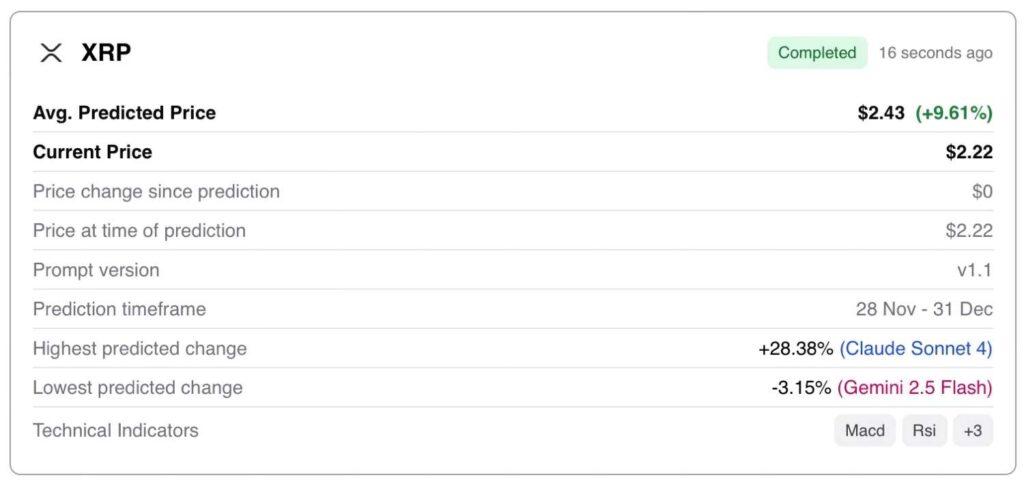XRP extended its weekly rally on Friday, November 28, climbing another 1.5% on the daily chart as a number of bullish developments renewed the momentum.
Notably, the token pushed above its 20-day exponential moving average (EMA) at $2.18 and is now testing the 50-day EMA at $2.26, marking its strongest technical setup in weeks.
Moreover, Binance reserves now stand at 2.7 billion XRP, the lowest level since January 2025, which suggests rising long-term holder accumulation.
To put the optimistic narrative to the test, Finbold’s AI prediction agent analyzed the crypto’s technicals more deeply and leveraged three leading large language models (LLMs) to predict the XRP price target by December 31.
AI predicts XRP price for end of 2025
At first glance, the prediction agent’s forecast suggests the bullish atmosphere surrounding XRP appears justified. That is to say, the average XRP price target for the end of 2025, based on the joint efforts of ChatGPT, Claude Sonnet 4, and Gemini 2.5 Flash, sits at $2.43, which implies the token is up for a 9.61% rally over the next month compared to the current price of $2.22.

However, the situation is slightly more complicated upon closer inspection. Namely, the three LLMs used in the projection provided drastically different numbers.
Claude Sonnet 4, for instance, suggested that XRP could explode 28.38%, reaching a price of $2.85 by the end of the year. In comparison, ChatGPT suggested an upside of only 3.6% and a price target of $2.30. On the other hand, Gemini 2.5 was not bullish at all. Rather, Google’s AI assistant thinks that the cryptocurrency is more likely to see a momentum reversal and fall 3.15% to $2.15.
Accordingly, the average 9.61% uptick was largely boosted by Claude Sonnet 4’s exceptionally confident take and reveals just how divided AI-driven outlooks remain despite a broadly upbeat market structure.
In other words, while the blended forecast leans positive, the dispersion between the individual predictions points to some lingering uncertainty over whether XRP can sustain its recent breakout.
Featured image via Shutterstock








